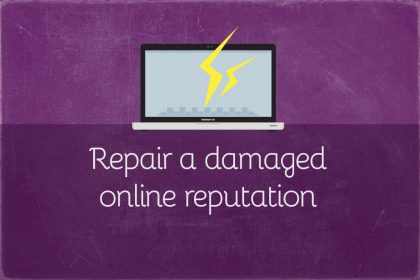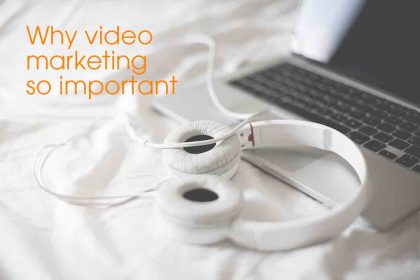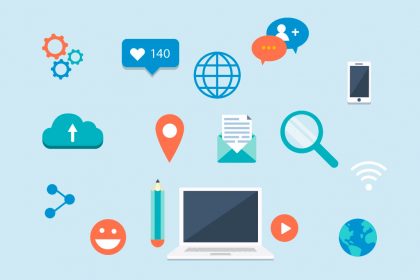Five ways knowing your ideal customer will help you earn more money
Love more customers, sales and business or freelance profit? Here are five ways knowing your ideal customer will help you earn more money.
If someone were to ask you who your ideal customer or client is, what would you say? Would you be able to instantly define a type of person or business, or a handful of types?
Would you be able to paint a rounded picture of the people who you sell to? A picture so accurate that the person felt real? Maybe they even have a name?
Or would you shrug and say you didn’t know? Or answer “everyone”?
It’s no coincidence that the most successful businesses and freelancers don’t guess who their customers are. They know exactly who they need to market and sell to in order to earn money.
And they know who not to waste time and money trying to attract, because they can’t build an income on their custom.
Finding your ideal customer isn’t just about profiling some people who may need what you offer. It’s about being really clear about who needs, and will and can buy from you often enough to build a sustainable business or freelance career.
Here are five reasons why it’s so important that you know who your perfect customers or clients are – and how we can help you identify your ideal customers.
1) You’ll find it easier to get your pricing right
Is your pricing attacking the right people to your business? Or are you actually putting people off?
Charge too much for your offering and people won’t be able to afford you. Charge too little and they’ll think your products or services can’t be any good. Or you’re not very experienced or accomplished.
So it’s important to price accurately, and for the people who will actually buy from or hire you. Here’s what you need to take into account when working out your pricing:
- How much it costs you to produce or buy and ship a product.
- How much it cost you to deliver a service.
- Your business overheads.
- How much time each product or service takes.
- How much money you need to earn.
- How much time you can devote to your business.
- How much your customers or clients are prepared to or can pay.
- How much competition you have.
- The market rate.
- How much your competitors charge.
- Where you are on the value/premium spectrum.
Some of these factors are based on you – your time and your costs. But to accurately estimate others, you need to know who you’re selling to.
When you have a clear insight into your ideal customers and what they want and need, you’ll find it much easier to get your pricing right, so you’re attracting customer and clients AND making a profit.
2) You’ll know where to focus your time on social media
Facebook, Pinterest, Instagram, Twitter, YouTube, LinkedIn… which social media channels should your business be on?
It’s easy to make the mistake of thinking you need a presence on all of them, but realistically no small business or freelancer has the time to do several platforms properly. Instead, we usually recommend you pick a maximum of two to focus on – and do these really well.
But which two?
This is where your customer avatars are essential. When you know who your ideal customers are, it’s easy to identify the platforms that they prefer. And importantly: the platforms they use when thinking about what you do.
What do we mean by this? Let’s say you’re a bookkeeper. You may personally love Instagram, and know that lots of female freelancers use it too. So it makes sense to build a profile there, right?
Not necessarily. What are your potential customers actually doing on Instagram? Are they getting business tips and following professional, B2B accounts? Or are they checking up on the accounts they follow, and getting style inspiration?
If its the latter, it doesn’t matter how much time you spend on Instagram; you’re not going to get business leads there.
Instead, your customers may love using Instagram for leisure, but rely on LinkedIn for professional networking and insights. And if you properly profile your perfect customers you’ll know this.
3) You’ll have less competition
Having some competition in business is good – it means there is an established market for what you do, and your competition will help educate people about the need for your type of products or services.
But you don’t want too much competition. With too many players vying for the same business, you’ll find it harder to stand out, need to spend more in advertising, and will need to be more competitive in price.
In a worst case scenario, as a generalist in a busy market you could end up in a race to the bottom – everyone trying to outbid each other on price and losing money in the process.
Clients and customers, meanwhile, can cease to value businesses on quality and simply hunt out the cheapest deal, further damaging the market.
So how do you avoid becoming an invisible minnow in an ocean of other similar businesses? Simple: you find a way to niche your offerings.
But what niche do you choose? This is where having proper research on you target audience is essential. You need to know what they want and what they need. What they will pay for, and what they require in a large enough volume to build a sustainable business.
The insights you gain through customer research can help you successfully niche your business. So you stop competing on price and give people a reason to go out of their way to choose your business.
4) Your marketing will be more impactful
The starting point of every marketing strategy is your ideal customer. You can’t plan out a marketing campaign without knowing who you want to talk to, what they care about, and what offers and messaging is going to resonate with them best.
In order to talk to people, you need to get inside their heads. You need to know what they think, feel and care about. You need to know their lives – their habits, their fears, their dreams and their routines.
You need to know when, where and how to talk to them. And the real reasons why they might buy what you’re offering.
With all these insights, your marketing can’t help but work. And without them? You’ll be forced to rely in guesswork, and generic messaging that doesn’t really appeal to anyone.
5) You’ll find it easier to identify more customers
We often liken profiling your customers as playing a game of Guess Who? You start out with a group of very different people, and slowly narrow it down to someone who perfectly fits your perfect customer.
Once you have that single person, you can then go out and find more people just like them. You know exactly what they look like, what they care and think about, what they feel, and where they go.
So rather than trying to sell your wares to a mixed bunch of people with varying needs, motivations and purchasing habits, you can find lots of people who want the same thing for the same reason.
And not only is it easier to find lots of these people, but your marketing messaging will be a perfect fit for them, so you’ll find it easier to sell to them.
When you get your ideal customer right you can go from this:

To this:

To this:

Can you see how much more powerful your marketing can be when you have an audience of the right person? How much more tailored your messaging can be, and how much more efficient your advertising budget will be?
So if you haven’t already spent the time working out your ideal customer, we recommend starting now. Here are there questions you need to ask in order to work out who they are.










